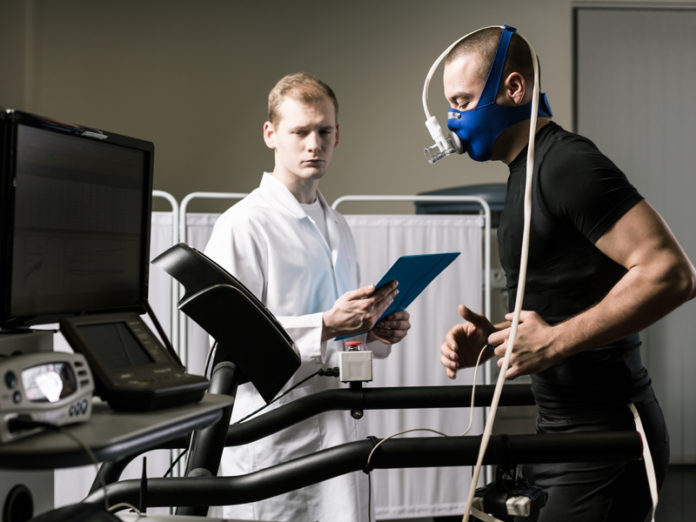
The VO2max test is not for the faint of heart! But it might help your running performance. If you’ve been training really hard and want to objectively see your improvement, you might be interested in doing a VO2max.
How it Works
This test requires you to exercise progressively harder, up to the point where you tap out due to fatigue. It’s a serious test. The maximal volume of oxygen uptake (VO2max) tells us how strong your aerobic energy systems are and is the gold standard and only method for directly measuring this. It is done in a clinical or commercial setting and costs around $200.
What it Measures
A VO2max test can also measure your ventilatory threshold (VT). This is the point at which your anaerobic energy systems (glycolysis, lactic acid production) must ramp up the speed at which they operate to keep up with energy production demands.
How it Helps
Once you know your VT, you can use this information to design an exercise plan to meet performance goals. In addition, knowing your VT can help prevent you from training too hard on too many days, which may leave you injured.
Who It’s For
If you are relatively new to aerobic exercise or work out more for fun than competition, a VT test probably isn’t for you. If, however, you’ve been racing for a while and really want to hone in on your training, then a VT test will help you really dial in your training zones.
Try the Talk Test
If you don’t have the time or money for a VO2max test, another way to find out your ventilatory threshold (VT) is the talk test. This is an equipment-free test and asks the question, ‘Can you carry on a conversation without having to take breaths to break up sentences while exercising?’ If yes, you are below VT, if no, you are above your VT. If you were to wear a heart rate monitor during this talk test (and repeated this numerous times) you’d have a pretty good idea of where your VT is and how it changes over time.
















